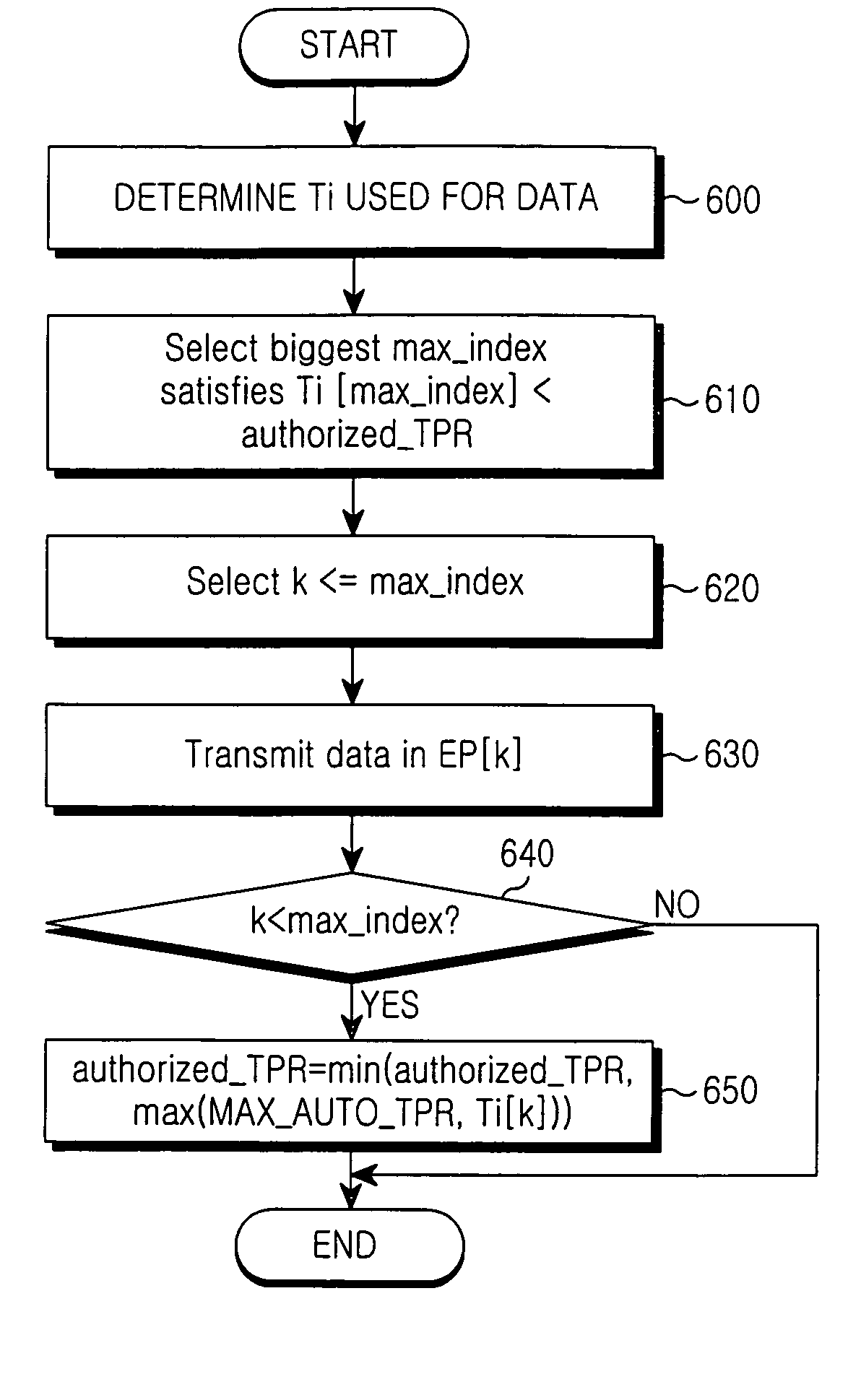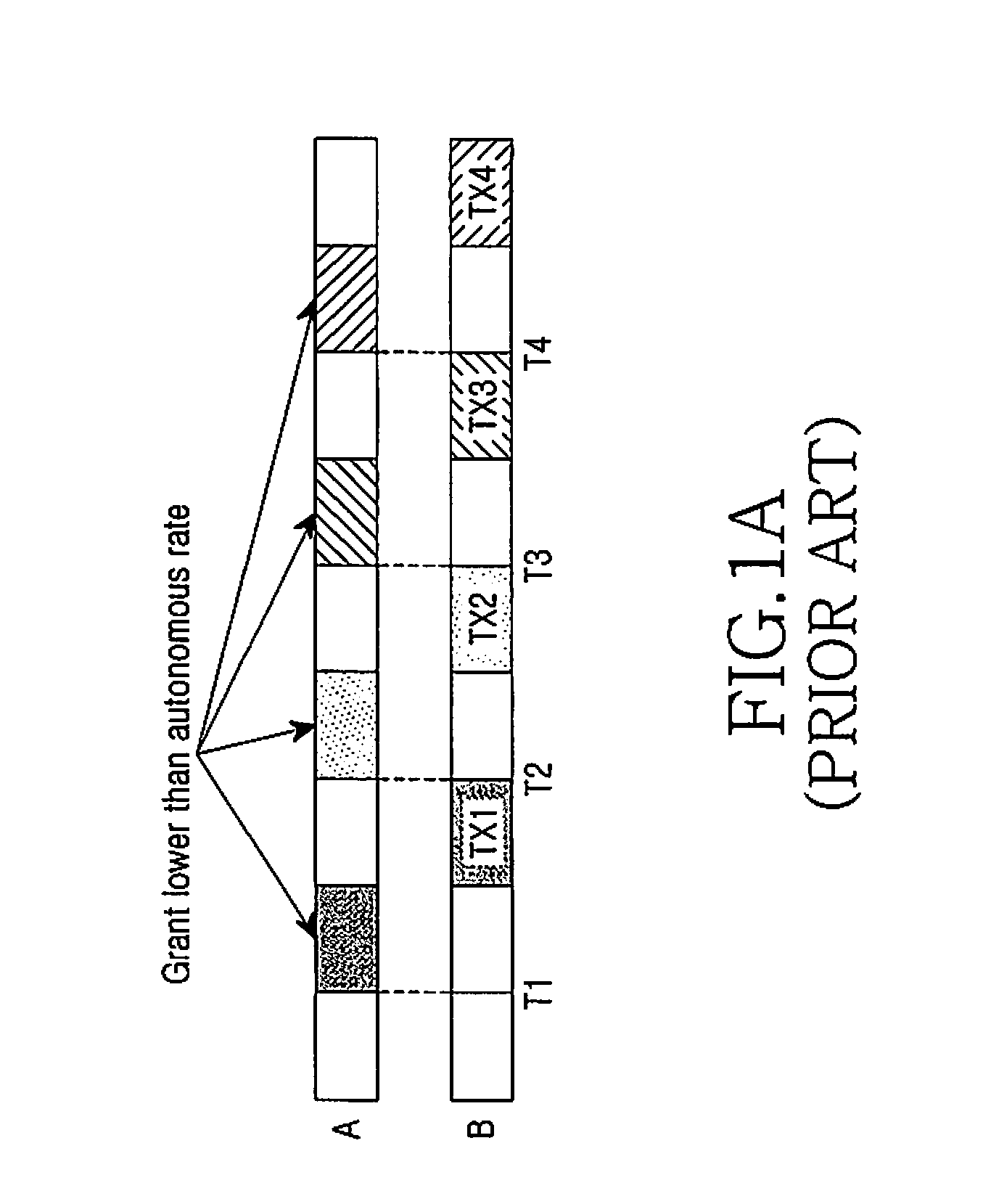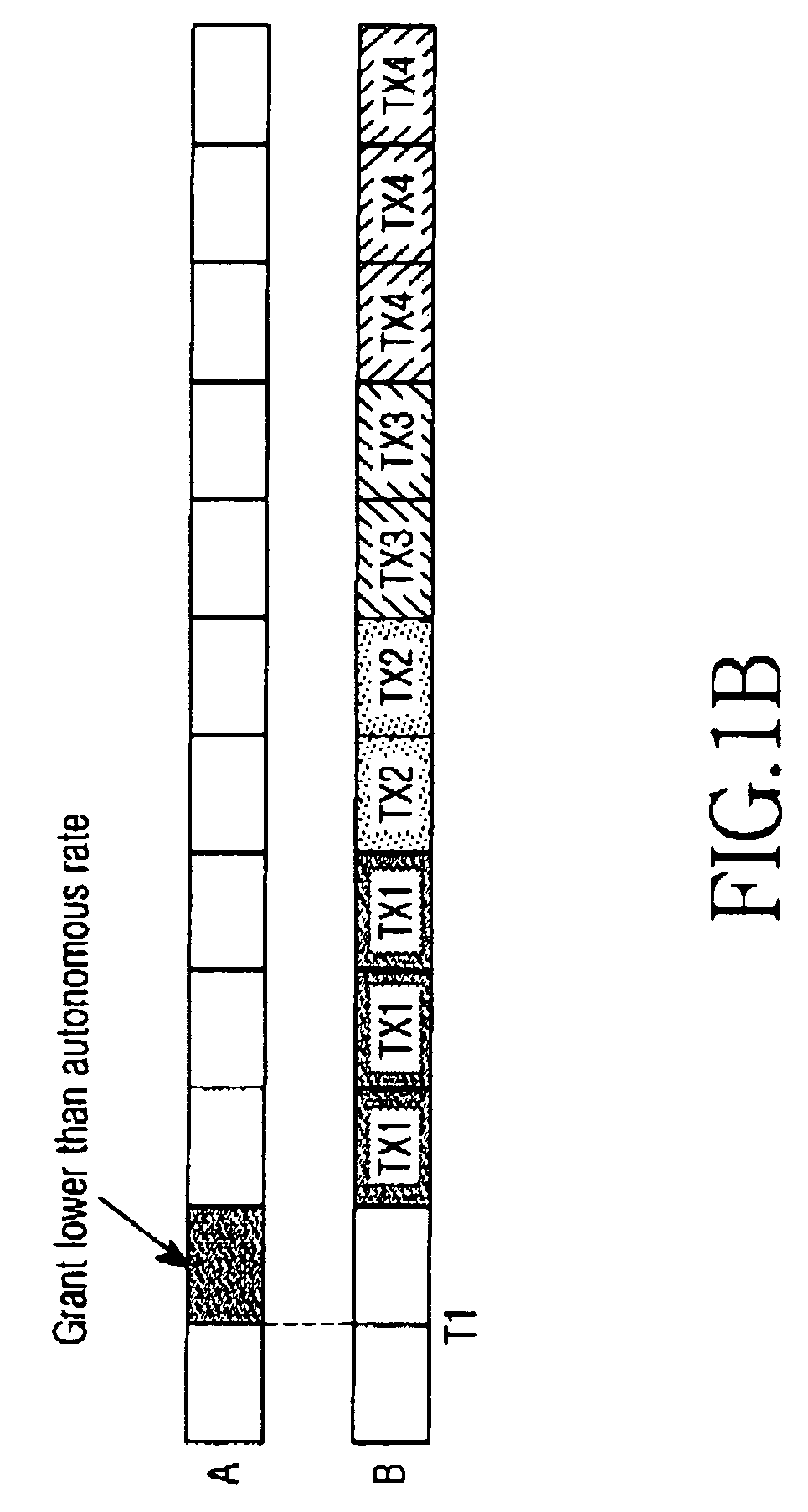Apparatus and method for controlling reverse rate in mobile communication system
a mobile communication system and reverse rate technology, applied in the field of apparatus and a method for controlling the reverse rate in the mobile communication system, can solve the problems of large amount of bits, large amount of control, and full rate transition scheme, and achieve the effect of improving the efficiency of resource use and increasing priority
- Summary
- Abstract
- Description
- Claims
- Application Information
AI Technical Summary
Benefits of technology
Problems solved by technology
Method used
Image
Examples
Embodiment Construction
[0035]Hereinafter, preferred embodiments of the present invention will be described with reference to the accompanying drawings. In the following description, a detailed description of known functions and configurations incorporated herein will be omitted when it may make the subject matter of the present invention unclear.
[0036]The present invention is directed to apparatus and a method for allocating sufficient resources to new services or users having a higher priority for services by fast limiting a maximum data rate of one or more MSs, to which an autonomous transmission control is granted, when the users request services, or new services are generated in a mobile communication system including a BTS and the MSs.
[0037]The term “Persistence” is used herein to denote Grant Persistence. In contrast with the conventional method, the method of the present invention can persistently limit an autonomous rate of the MS by allowing the BTS to transmit the Grant including Persistence bit...
PUM
 Login to View More
Login to View More Abstract
Description
Claims
Application Information
 Login to View More
Login to View More - R&D
- Intellectual Property
- Life Sciences
- Materials
- Tech Scout
- Unparalleled Data Quality
- Higher Quality Content
- 60% Fewer Hallucinations
Browse by: Latest US Patents, China's latest patents, Technical Efficacy Thesaurus, Application Domain, Technology Topic, Popular Technical Reports.
© 2025 PatSnap. All rights reserved.Legal|Privacy policy|Modern Slavery Act Transparency Statement|Sitemap|About US| Contact US: help@patsnap.com



